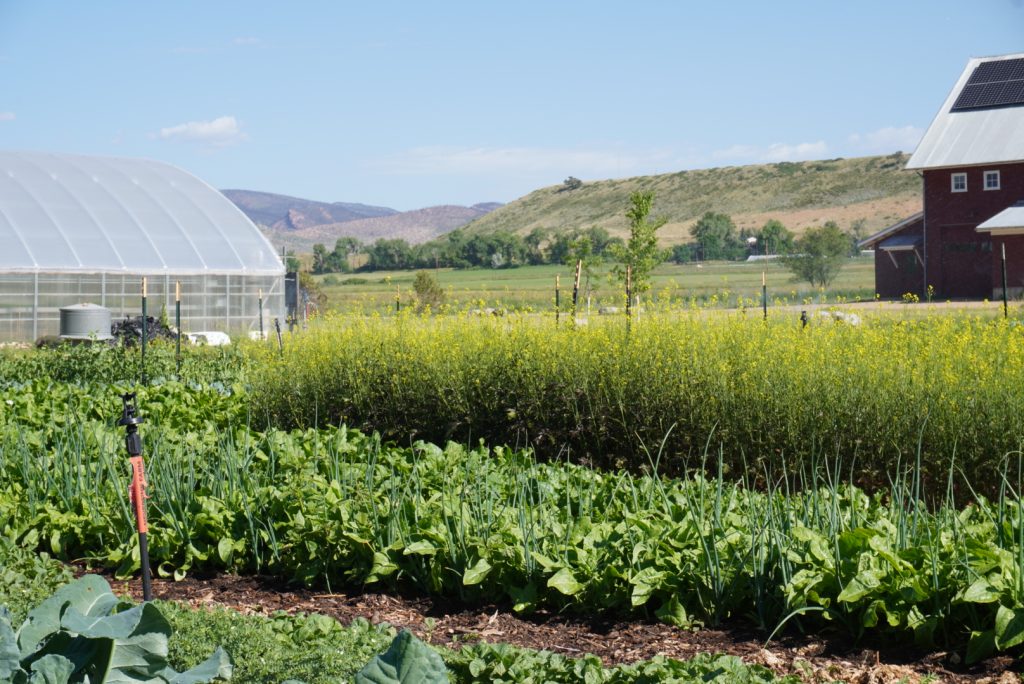Getting the dirt on soil health
You may have overheard terms like no-till farming, crop rotation, and companion planting thrown around at your local farmers market before. But what, exactly, do they mean? All of these terms explain farming practices that have evolved to support soil health. Healthy soil is full of essential vitamins and minerals that, when stewarded correctly, can pass those nutrients directly to your dinner plate. At the same time, conventional agricultural practices that degrade soil health produce less healthy food, resulting in a 50% decrease in the nutrient density in commercial produce over the last 50 to 70 years. Read on to learn more about these practices and how they contribute to healthy soils, healthy people, and a healthy planet.
No-Till Farming
Conventional farming involves a practice called “tilling” to prepare soil for planting. Either by hand or by machine, soil is turned over so that unwanted weeds are killed and the soil is loose and easy to plant in.
While tilling kills weeds, it also kills decomposing materials that put nutrients back into the soil, compacts soil by running heavy equipment over the land, and increases the likelihood of erosion due to lower moisture holding capacity and disturbed soil.
This has led many farmers to choose either not to till their soil at all, or to minimize the amount of tilling they do in order to better preserve the health of their soil. Leaving the soil intact may lead to more weeds, but in turn create a richer soil that is higher in nutrient density, better at holding water (meaning less irrigation necessary), and overall more resilient to extreme weather and pests.

Crop Rotation
Conventional farms often monocrop, which means they grow one single crop (such as corn) on the same piece of land year after year. This practice is highly efficient in the quantity of product produced at a large scale, but the land – and the soil – can only support this system of farming for so long.
Each crop takes certain nutrients out of the soil, and returns others. So, if you continue planting the same thing on the same piece of land, the same nutrients will be added to and removed from the soil each year, in turn limiting the mix of nutrients available in the soil. This practice allows pests to become comfortable in one area, requiring stronger pest control measures.
Alternatively, farms that rotate their crops and constantly change what is planted on each section of their land from year to year are able to combat many of these issues. For example, a crop that is planted on a piece of land in 2024 may give the soil the exact nutrients needed to grow a different crop on the same land in 2025. This keeps a constant cycle of give and take between soil and plants, increasing the longevity of the land to produce abundantly. Additionally, the pests that go after a certain crop will change from year to year, preventing a specific pest from continuing its lifecycle and becoming an insurmountable challenge.

Companion Planting
Similar to crop rotation, plants can benefit from each other through companion planting. Rather than switching what crop gets planted on the same piece of land each year, companion planting varies the crops that are planted right next to each other at the same time. This method of planting also allows small farmers with less land to more efficiently use their space – producing more food on less land!
While these are some of the most commonly discussed approaches to soil health from our local farmers, it doesn’t stop here. We are seeing our local food producers going above and beyond with Regenerative Organic Certification, bringing back indigenous soil management techniques, building organic seed libraries for future food production, integrating animals into regenerative land management and even trying novel approaches like incorporating solar production on farms. Here in Boulder County, there has been over $2.6 million invested in grants to farmers, ranchers and nonprofits trying new methods to make high quality, nutrient-dense food and healthy soil at the same time.
These investments in soil health lead to healthier food for you and your family, and a healthier environment for all living beings from the microbes in the soil, to the birds in the air and fish in the water. Simply by shopping from local food producers and picking up a wider variety of produce, you will be bringing the diverse array of the nutrients from the soil our farmers steward into your diet. Next time you visit our farmers markets in Boulder and Longmont, be sure to ask a farmer about their soil management practices. We can almost guarantee you’ll see a spark light in their eyes as they enthusiastically answer your question.
